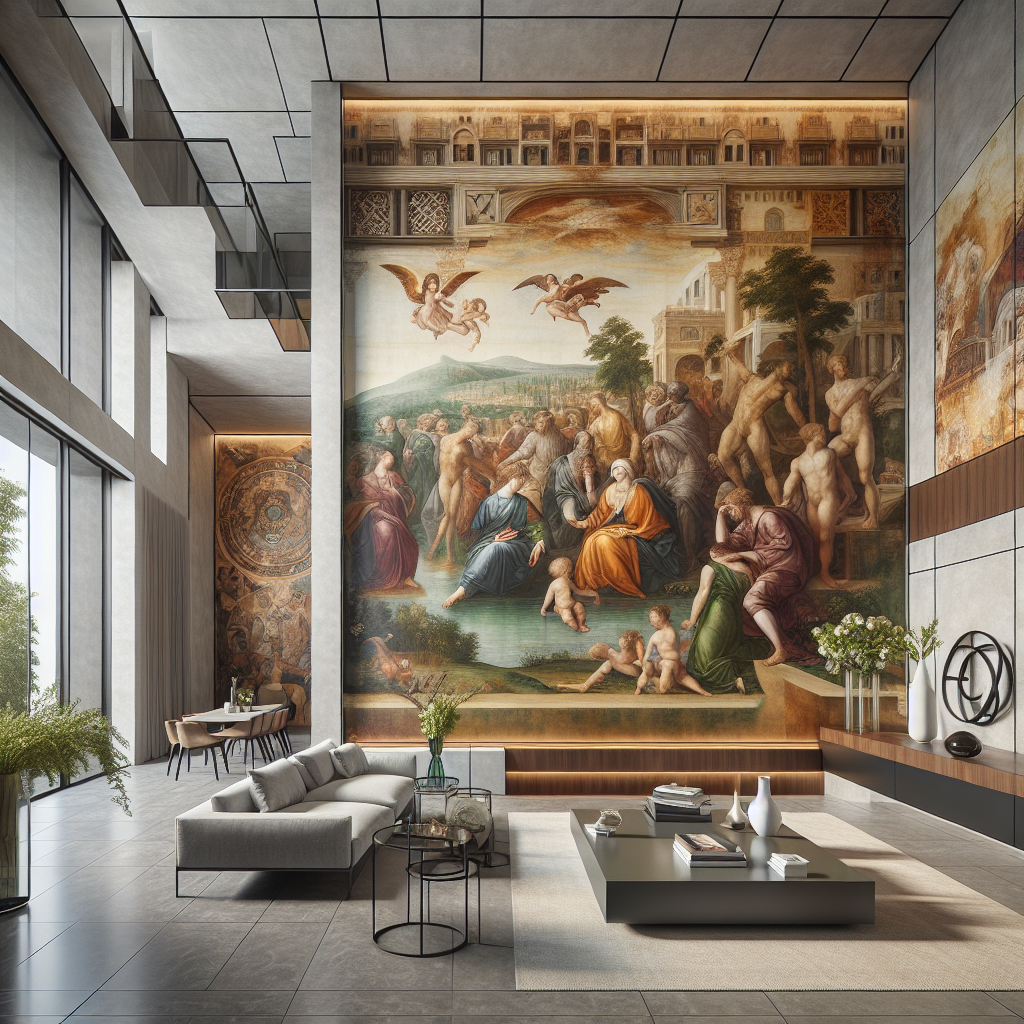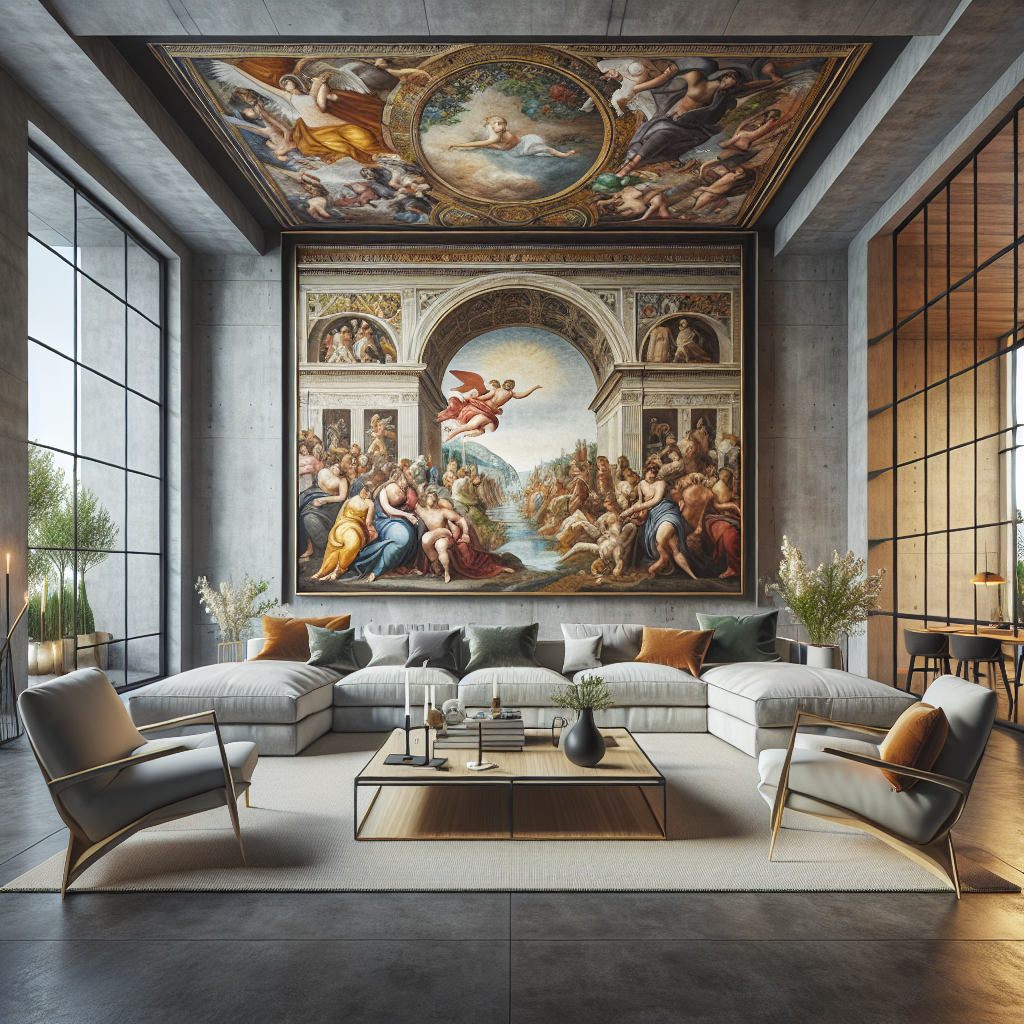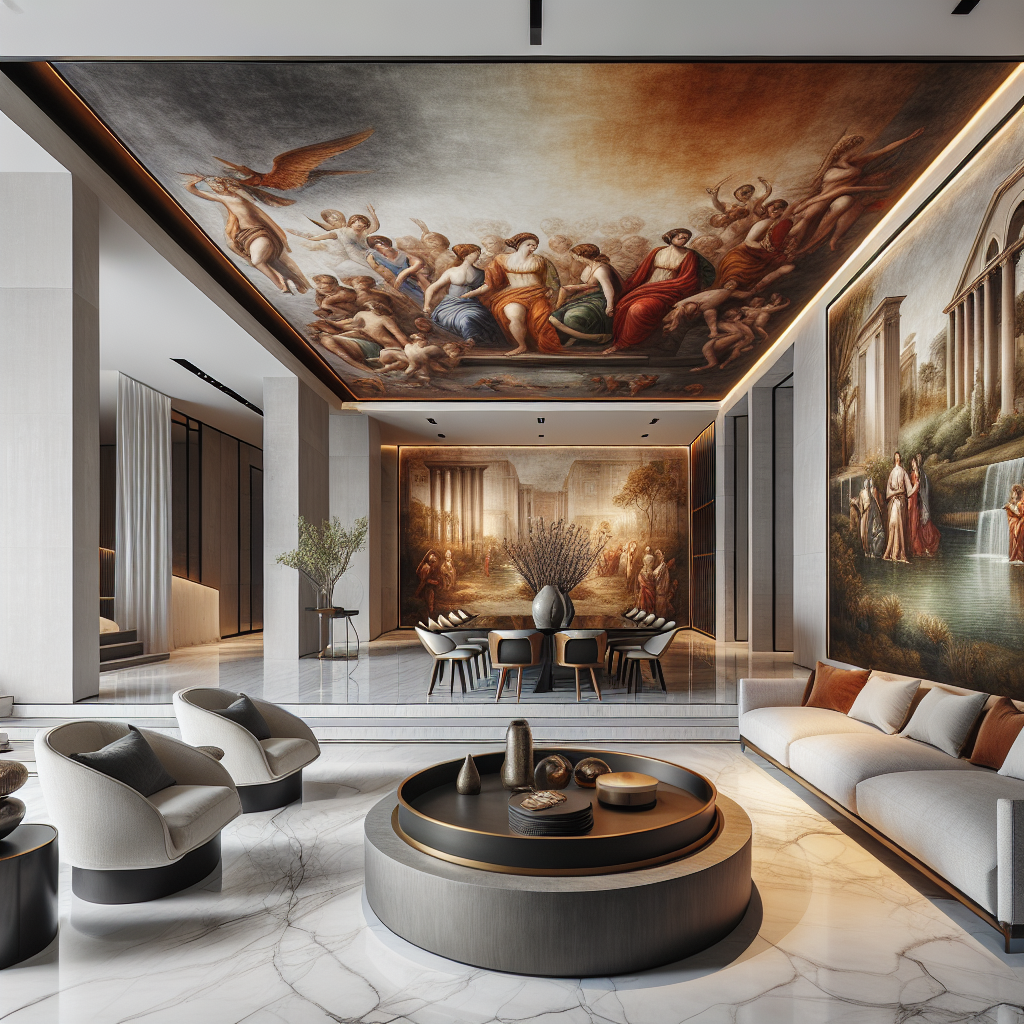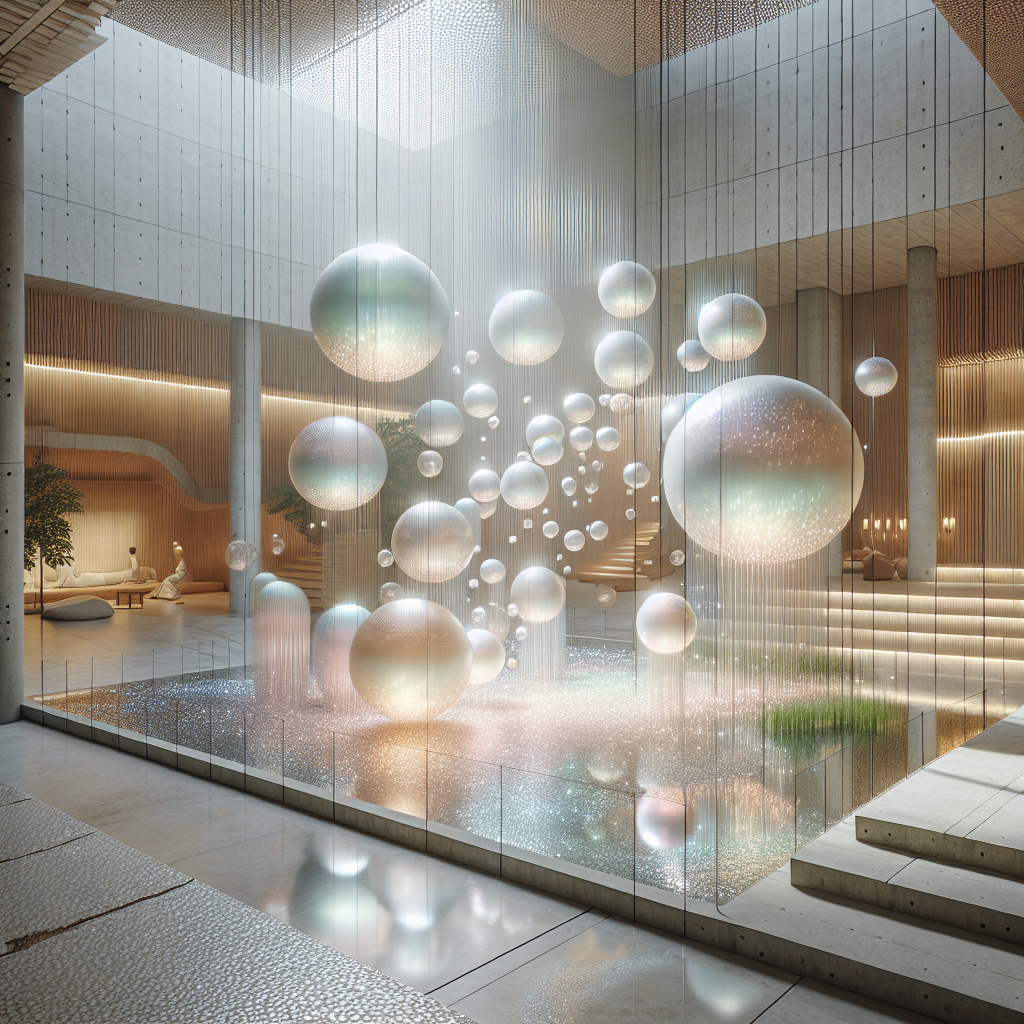Exploring the Revival of Frescoes in Modern Interior Design

The Renaissance of Frescoes: A Canvas of History in Contemporary Spaces
Once the pride of Renaissance palazzos and baroque churches, frescoes are experiencing a renaissance of their own in the realm of modern interior design. This ancient technique, where earth pigments are applied onto wet plaster, is not just a relic of the past but a burgeoning trend in contemporary homes and public spaces. It’s a testament to the timelessness of art and the enduring human desire to be surrounded by beauty.
Design aficionados and homeowners alike are now embracing frescoes for their ability to infuse spaces with character and narrative. Unlike the ephemeral nature of digital prints or the solitary presence of a framed painting, frescoes offer a sense of permanence and integration with the architecture they adorn. This seamless blend of art and environment creates a dialogue between the past and present, making frescoes a compelling choice for those looking to make a profound aesthetic statement.
Artisanal Allure: The Craftsmanship Behind Modern Frescoes
The resurgence of frescoes in modern interior design is partly due to a growing appreciation for artisanal craftsmanship. In an age dominated by mass production, the bespoke nature of fresco painting stands out as a luxury. The meticulous process, which requires a skilled hand and a deep understanding of the materials, results in a unique work of art that can never be replicated exactly. This exclusivity is highly prized in high-end design circles, where the demand for personalized and handcrafted elements is on the rise.
Contemporary fresco artists are pushing the boundaries of this age-old technique, experimenting with new themes and color palettes that speak to modern sensibilities. They are also adapting the medium to suit the practicalities of modern living, ensuring that frescoes can withstand the environmental conditions of today’s interiors. The result is a fusion of tradition and innovation that is both captivating and enduring.
Incorporating Frescoes into Modern Interiors
Integrating frescoes into modern interiors requires a thoughtful approach. Designers and architects are finding inventive ways to incorporate these artworks into contemporary settings, whether it’s a feature wall in a minimalist loft or a dramatic ceiling in a boutique hotel. The key is to strike a balance between the fresco’s visual impact and the overall design scheme.
One approach is to use frescoes as a focal point, drawing the eye and setting the tone for the space. This can be achieved by commissioning a custom fresco that reflects the occupant’s personal style or the building’s history. Alternatively, frescoes can be used to add depth and texture to a room, serving as a backdrop that complements the interior’s architectural features and furnishings.
For inspiration, one might look to the Sistine Chapel ceiling, where Michelangelo’s masterful frescoes not only enhance the grandeur of the space but also create an immersive experience for visitors. While few can aspire to such lofty heights, the principle of using art to elevate a space is one that can be applied on any scale.
Frescoes in Commercial Spaces: A New Canvas for Branding
The application of frescoes extends beyond residential interiors. In the commercial realm, businesses are harnessing the power of frescoes to reinforce their brand identity and create an unforgettable customer experience. From luxury boutiques to avant-garde restaurants, frescoes offer a storytelling element that can captivate and engage clients.
Consider the impact of a fresco in a high-end retail environment. It can convey the brand’s heritage, craftsmanship, or commitment to artistry, setting the stage for the products on display. Similarly, in the hospitality industry, a fresco can transport guests to another time and place, enhancing the ambiance and allure of the establishment.
By tapping into the narrative potential of frescoes, businesses can create a strong visual statement that resonates with their audience. It’s a strategy that melds marketing savvy with aesthetic finesse, resulting in spaces that are not just places of transaction but destinations in their own right.
The Sustainability Factor: Frescoes as an Eco-Friendly Choice
In today’s design landscape, sustainability is a paramount concern. Frescoes, with their natural pigments and compatibility with lime plaster, align well with eco-friendly building practices. Unlike synthetic paints or vinyl wallpapers, frescoes do not off-gas harmful chemicals, contributing to healthier indoor air quality.
The durability of frescoes also makes them a sustainable option in the long term. When executed properly, a fresco can last for centuries, reducing the need for frequent renovations and the associated waste. This longevity, combined with the use of natural materials, positions frescoes as a responsible choice for those looking to minimize their environmental footprint.
Moreover, the revival of frescoes can play a role in preserving cultural heritage. By supporting traditional fresco artists and techniques, the design community can help keep these skills alive and ensure that they are passed down to future generations. It’s a way of honoring the past while embracing a more sustainable future.
Conclusion: The Timeless Appeal of Frescoes in Modern Design
The renaissance of frescoes in modern interior design is more than a passing trend; it’s a reflection of a deeper yearning for authenticity, artistry, and connection to history. As we navigate a world increasingly dominated by the digital and the disposable, frescoes offer a counterpoint—a reminder of the enduring power of handcrafted beauty.
Whether in a private residence or a public space, frescoes have the ability to transform environments and inspire those who inhabit them. They are a testament to the human spirit’s capacity for creativity and reverence for the past. In the hands of today’s designers and artists, frescoes are not just a nod to history but a vibrant part of our contemporary cultural tapestry.
As we continue to explore the possibilities of this ancient art form, we can expect to see frescoes emerge in ever more innovative and impactful ways. They are, after all, a canvas of history—reimagined for the modern world.








